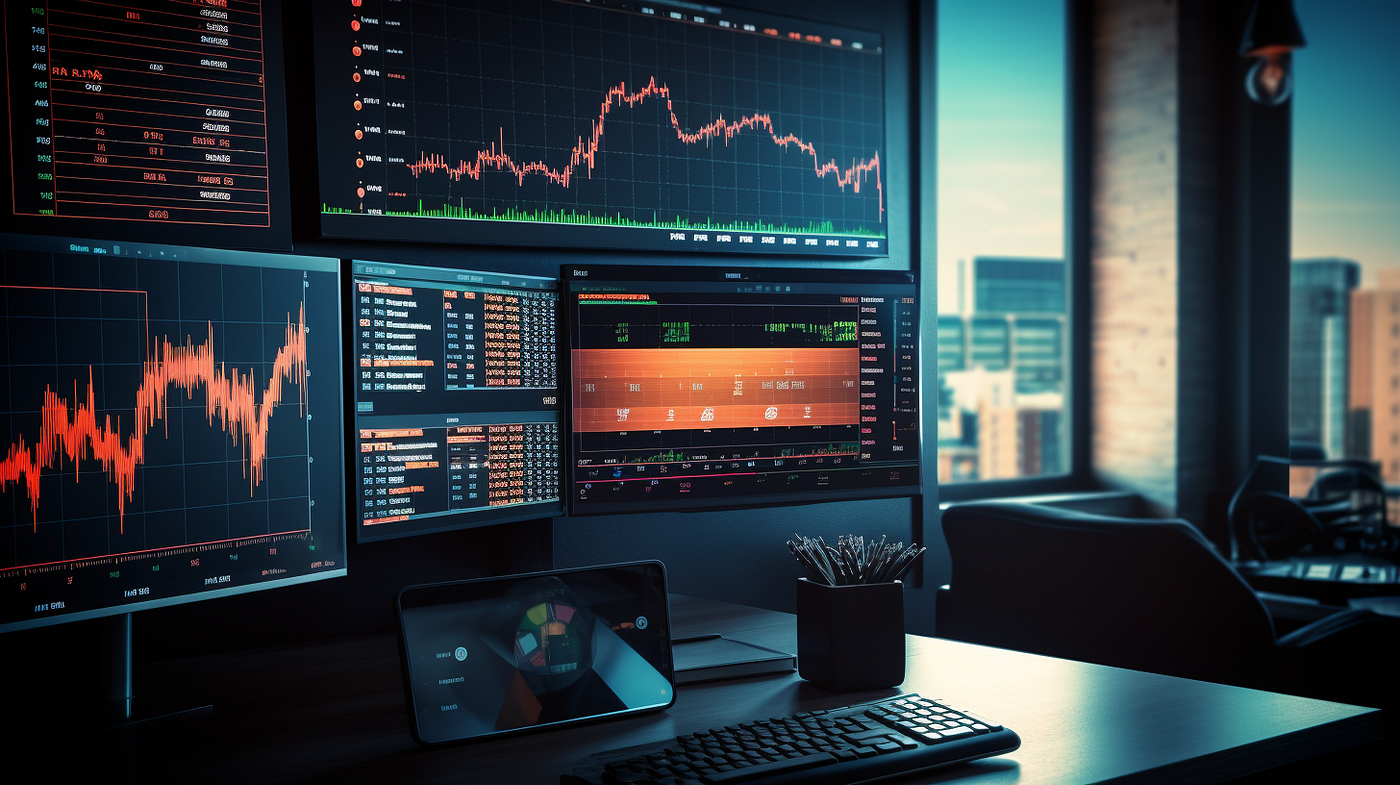Introduction to Leverage in CFD Trading
Leverage is one of the most powerful yet risky tools in financial markets, particularly for traders involved in CFD Trading. In the simplest terms, leverage allows traders to control larger positions in the market with a relatively small amount of capital. This amplified exposure can multiply profits significantly if the trade moves in your favor. However, it also magnifies potential losses, which makes understanding and managing leverage a crucial skill for retail investors who want to succeed in CFD Trading. Many beginners are drawn to leverage because of the allure of high returns, but without proper risk management and disciplined strategies, leverage can quickly erode trading capital and cause traders to exit the market prematurely.
What is Leverage and How It Works in CFD Trading
In CFD Trading, leverage operates on the principle of borrowing capital from your broker to increase the size of your trades. For example, if your broker offers leverage of 1:30, it means that for every $1 you invest, you can control a position worth $30. This effectively multiplies your buying power but also means that even small price movements in the underlying asset can result in substantial changes to your account balance. Understanding this multiplier effect is essential for any CFD trader. Leverage in CFD Trading is often expressed as a ratio, and while higher ratios can be tempting, they come with proportionally higher risks. The key to managing leverage effectively lies in striking a balance between opportunity and safety.
Why Leverage Appeals to CFD Traders
One of the main reasons traders are attracted to CFD Trading is the flexibility and accessibility it provides. Leverage allows retail traders to participate in markets that would otherwise be inaccessible due to high capital requirements. Whether you are trading indices, commodities, stocks, or forex through CFDs, leverage enables you to take advantage of price movements without tying up large amounts of capital. This feature can be particularly appealing to new traders who want to diversify their portfolios without committing excessive funds. However, it’s important to note that while leverage can enhance profit potential, it also increases market exposure and can amplify losses if the market moves against your position.
The Double-Edged Sword of Leverage
In CFD Trading, leverage is often referred to as a double-edged sword because of its ability to magnify both gains and losses. For instance, with 1:20 leverage, a 1% movement in the underlying asset translates to a 20% change in your account value. This can work exceptionally well when trades go in your favor, but it can also result in rapid losses. Many traders underestimate how quickly leverage can work against them, especially in volatile markets. A lack of preparation and poor risk management can lead to margin calls, forced position closures, and the loss of trading capital. This is why managing leverage responsibly is one of the most important skills in CFD Trading.
Key Risks Associated with Leverage
The risks of leverage in CFD Trading extend beyond the possibility of losing more than your initial investment. Some of the main risks include market volatility, emotional decision-making under pressure, and insufficient capital to maintain open positions. Additionally, leveraged positions are subject to overnight financing costs, which can erode profits if trades are held for extended periods. Understanding these risks is the first step toward effective leverage management. Without a solid plan, traders may find themselves overexposed and vulnerable to sudden market swings.
Determining the Right Leverage for Your CFD Trading
Choosing the right leverage ratio is a personal decision that depends on your risk tolerance, trading experience, and financial goals. Beginners in CFD Trading should generally opt for lower leverage levels to reduce the risk of substantial losses. Experienced traders may choose higher leverage if they have proven strategies and strict risk management rules in place. The goal is to use leverage as a tool to enhance your trading potential without allowing it to dominate your decision-making. Remember, successful CFD Trading is not about taking the biggest positions possible—it’s about making consistent, calculated trades that align with your overall strategy.
The Role of Risk Management in Leveraged Trading
Risk management is the foundation of safe and profitable CFD Trading, especially when using leverage. One of the most effective risk management techniques is setting stop-loss orders to limit potential losses. By defining a predetermined exit point for a losing trade, you can prevent emotions from influencing your decisions and protect your account balance. Position sizing is another critical component—never risk more than a small percentage of your total capital on a single trade. By combining these tools with disciplined leverage use, traders can navigate the market more confidently and avoid catastrophic losses.
How Margin Requirements Affect Your Trades
In CFD Trading, margin refers to the amount of money you must deposit to open and maintain a leveraged position. Margin requirements vary depending on the asset being traded and the leverage offered by your broker. Understanding margin is essential because it directly impacts how much leverage you can use and how much risk you are taking on. If your account balance falls below the required margin level, you may receive a margin call, forcing you to deposit more funds or close positions. Effective leverage management involves keeping a comfortable buffer above margin requirements to avoid unexpected closures.
Psychological Impact of Using Leverage
The psychological pressure of trading with leverage in CFD Trading can be intense. Knowing that a small market movement can dramatically affect your account value may lead to emotional decision-making. Traders may overreact to short-term fluctuations, close winning trades too early, or hold onto losing positions in the hope of a reversal. This emotional volatility can be as damaging as market volatility itself. Successful traders learn to stay calm under pressure, adhere to their strategies, and treat leverage as a tool rather than a gamble.
Using Leverage in Different Market Conditions
Market conditions play a significant role in determining the appropriate use of leverage in CFD Trading. In highly volatile markets, it is generally safer to reduce leverage to minimize the risk of large losses. In more stable market conditions, moderate leverage can be used to capitalize on predictable trends. Understanding how leverage interacts with market volatility allows traders to adapt their strategies accordingly. Flexibility is key—what works in one market environment may not be suitable in another.
Leverage and Asset Selection
Not all assets in CFD Trading are equally suited for high leverage. For example, forex and major stock indices tend to have lower volatility compared to individual stocks or cryptocurrencies, making them more manageable with moderate leverage. On the other hand, highly volatile assets require lower leverage to keep risks under control. Selecting the right assets for your leverage strategy is just as important as choosing the leverage ratio itself. By aligning leverage with asset volatility, traders can create a more balanced and sustainable trading approach.
Real-World Examples of Leverage in Action
To illustrate the impact of leverage in CFD Trading, consider two traders each with $1,000 in their accounts. Trader A uses 1:10 leverage, while Trader B uses 1:30 leverage. If the market moves 2% in their favor, Trader A earns $200, while Trader B earns $600. However, if the market moves 2% against them, Trader A loses $200, and Trader B loses $600. This example highlights the magnifying effect of leverage and why it must be managed carefully. While the potential for higher profits is tempting, the risk of larger losses should never be underestimated.
Practical Tips for Managing Leverage Effectively
Effective leverage management in CFD Trading involves more than just choosing a leverage ratio. Traders should:
- Start with lower leverage and gradually increase it as they gain experience.
- Use stop-loss orders consistently to protect against large losses.
- Avoid overtrading and focus on high-quality trade setups.
- Monitor margin levels closely to avoid margin calls.
- Keep emotions in check and follow a well-defined trading plan.
The Role of Education in Leverage Management
Continuous education is vital for mastering leverage in CFD Trading. Staying informed about market trends, economic indicators, and trading strategies can help traders make better decisions about leverage. Platforms like I AM A TRADER provide resources, tools, and training programs designed to enhance traders’ skills and improve their chances of success. By combining education with disciplined practice, traders can use leverage to their advantage without falling into common traps.
Conclusion: Mastering Leverage for Long-Term Success
Leverage is an integral part of CFD Trading, offering the potential for significant profits but also carrying substantial risks. Managing leverage effectively requires a combination of knowledge, discipline, and risk management skills. By understanding how leverage works, recognizing its risks, and applying it strategically, traders can enhance their trading performance while protecting their capital. Ultimately, the goal is not to avoid leverage altogether but to use it wisely as part of a comprehensive CFD Trading strategy that supports long-term success.





